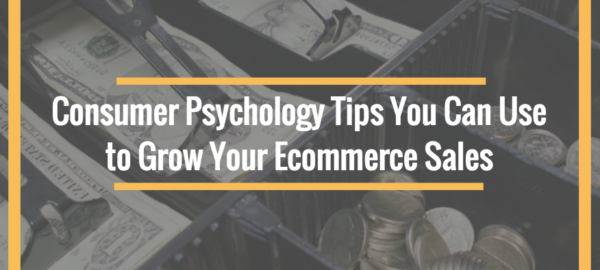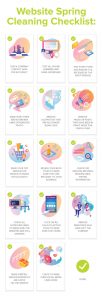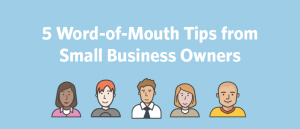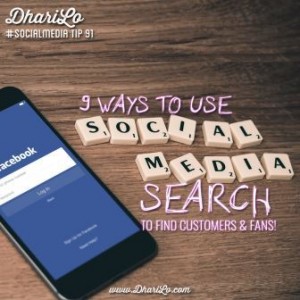
It’s been over three months since your ecommerce site went live. However, every time you check your website’s dashboard to see how much sales has been made, you can’t help but feel depressed every.single.time.
Zero. Nada. Zilch.
No one’s buying from the site!
“What one earth is happening?” You say to yourself.
You managed to convince the company’s key stakeholders to invest thousands of dollars to get the website up and running, yet the only thing it’s managed to do so far is eat up more money from the marketing budget.
At this point, you’re starting to wonder if it was right for you to even suggest putting up a website in the first place.
Considering how you’re about to have a meeting with the company’s key stakeholders in a couple of weeks, you’re pretty much running out of options, out of time, and even out of resources.
“I need to find a way to turn things around.” You say to yourself.
“I need to figure out how to drum up sales on the site; otherwise, it’d be impossible for me to justify the thousands of dollars that we spent to put it up.”
Friends, if you’re struggling with the same thing right now, then I’m glad that you’re reading this post. While there are several marketing trends happening this year that you can possibly use to grow your sales, I will share with you three psychology-backed conversion optimization tips that will help you convert your web visitors into actual paying customers.
Let’s hop right in.
1. Anchoring
Just a thought, perhaps your products’ pricing is the reason why your web visitors aren’t buying from you? Perhaps they find your merchandise too pricey (even though it isn’t)?
To help you get over this hurdle, you can use the concept of anchoring.
Before explaining to you what anchoring is, allow me to illustrate how it works.
If you want to sell a $ 200 office desk, then you need to sell it next to a $ 900 office desk. And if you want to sell a $ 500 laptop, then you need to sell it next to a $ 1000 laptop.
Can you see the pattern now?
According to the concept of anchoring, the human mind has a strong inclination towards relying/focus too much on the first piece of information offered (the “anchor) when making a decision.
In both of our examples above, the anchors are the $ 200 office desk and the $ 500 laptop. When both products are pegged against the $ 900 office desk and the $ 1000 laptop, the buyers will perceive the anchors as ridiculously affordable.
When using this strategy, your chances of converting those who leave your site because they found your products to be too expensive drastically increases.
2. Add an element of scarcity.
If you’ve had your fair share of waiting long lines during Black Friday just to get the merchandise that you wanted to have, then you’d have had experienced first hand how powerful adding the scarcity element is to a business.
When you think about it, the Black Friday is a classic example of how powerful the scarcity element is.
During the event, the shoppers are oh so willing to trample or run each other over just to get the product that they want.
Of course, we all know why that is. They understand that the merchandise they’re looking to buy is limited and the store might run out of supply. As a result, the shoppers endeavor their very best to acquire the merchandise.
Now that we’ve established how powerful adding the element of scarcity is to helping you get more sales, we need to address the next question.
“How can you add an element of scarcity on your ecommerce site?”
While there are several ways that you can go about doing this, I’d like to share with you two of the most effective and easy-to-use strategies that my team and I are fond of using.
Showing the number of available stocks.

Here’s a question for you: “If Amazon.com Inc. — one of the leading ecommerce companies — is showing the number of stocks left on their product pages to influence their shoppers to make the purchase, then shouldn’t you be doing the same thing?”
When you think about how Amazon.com has done bajillions of A/B tests to improve their site’s conversion rate, and they ended up deciding to show the number of stocks available on their product pages, it’s a telltale sign of how this conversion rate optimization method is working.
Add a timer/countdown.

One of the reasons why some shoppers do not buy even though they want (even need) your product is nothing compels them to buy immediately.
“I’ll just get back to this later.” or “I’ll have to do the laundry, sleep, or wash the dishes (etc.) first, then buy it.”
In a lot of cases, when your web visitors procrastinate in buying, they end up not buying at all because they often forget to get back to your site, or even find a better offer. That being said, you need to influence your visitors to buy NOW.
Of course, adding a timer is a good strategy to go about influencing them to take action immediately.
To learn more about the principle of scarcity, you can check out Robert Cialdini’s Six Key Principles of Influence.
3. The power of “free.”
Here’s an interesting study that I’d like to share with you. The study was conducted by Dan Ariely, a behavioral economist at MIT.
Dan and his colleagues set up a table in a cafeteria in MIT. They offered two chocolates: Lindt chocolate truffles (for 15¢) and Hershey Kisses (for 1¢). They then asked their customers to pick one chocolate only.
The result?
73% of their customers saw that they were getting a good deal out of the chocolate truffles, so they went with it.
Here’s where things get interesting.
When Dan and his team deducted 1¢ on their pricing for both chocolates — turning the price of the chocolate truffles to 14¢ and the Hershey’s kisses for free — the majority of their customers (69% of them) went with Hershey’s kisses.
Such is the power of “free.”
When you think about it, their customers should have gone with the chocolate truffles since they were still getting a good deal out of the 14¢ price. However, that isn’t the case, most of their customers went with the Hershey’s Kisses.
Here’s a question that I’d like to ask you: Are you getting very little to no sales because you are “outgunned” by your competitors when it comes to your product’s value?
If you answered with a “yes” and you’re thinking of a way to turn the tables, then you need to think of the chocolate truffles and Hershey’s Kisses that Dan and his colleagues offered.
The Hershey’s Kisses might not be on the same level as the chocolate truffle; however, it still managed to draw more people to it the moment Dan and his colleague used the power of “free.”
To apply this strategy, you can offer your services for free in the first month, then charge your customers on the second month (while being transparent about it, of course).
You can also offer freebies to entice your customers to sign up for your newsletters. Once they’re on your list, you can then establish your relationship with them then pitch your services strategically in the future.
What’s next?
Are there other conversion optimization tips that you’d like to share? Whether they are backed by psychological principles or something that you just came up with on a whim (which ended with mindblowing results), please share them in the comments section below.
Digital & Social Articles on Business 2 Community(104)






